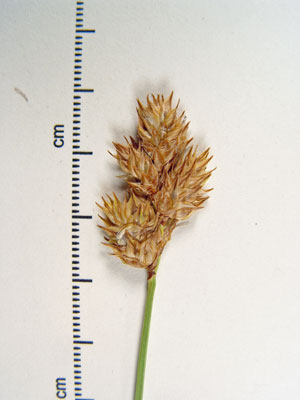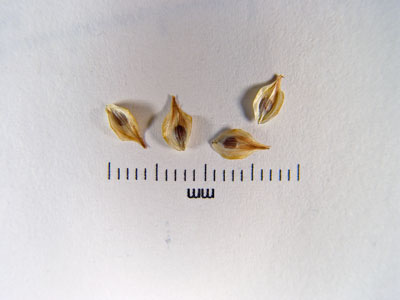DACF Home → Bureaus & Programs → Maine Natural Areas Program → Communities, Plants, and Animals → Rare Plants → Carex bicknellii

Carex bicknellii Britt.
Bicknell's Sedge
- State Rank: S1
- Global Rank: G5
- State Status: Endangered
Habitat: Open woods, fields, meadows in moist or dry soil. [Old field/roadside (non-forested wetland or upland)]
Range: Maine south to Delaware , west to New Mexico , North to Saskatchewan .
Aids to Identification: Members of this genus can be difficult to identify without careful examination of microscopic features and knowledge of general groups of species. Bicknell's sedge is a member of the section Ovales, a group identified by its dense roundish head of fruits and perigynia (the inflated sac that enclosed the achene) with thin, winged margins. Bicknell's sedge has thin perigynia that are 2.2-4.8 mm wide and 4.2-7.0 mm long and exceed the length of the obtuse carpellate scales. There are fewer than 25 culms per clump and the leaf sheath is minutely hairy.

Ecological characteristics: Carex bicknellii responds well to fire and disturbance. Maine populations are represented by C. bicknellii var. bicknellii.
Phenology: Fruiting June through July.
Family: Cyperaceae
Synonyms: Carex straminea Willd. ex Schkuhr var. crawei Boot.
Known Distribution in Maine: This rare plant has been documented from a total of 2 town in the following county: Penobscot.
Reason(s) for rarity: At northeast edge of range.
Conservation considerations: The single population seems to be persisting at only one known location that straddles two towns in Maine. The population is located on disturbed ground adjacent to railroad tracks. Plant appears to favor disturbance.